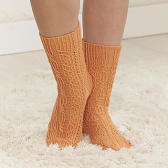Whilst electronic books and e-readers are becoming increasingly popular, there’s still something very special about an old fashioned book. Paperback Book Day celebrates the look, texture and experience of reading a paperback classic.
thanks, helen, for these 'happy' pics
Word of the Day
| |||
| Definition: | (noun) An agent that causes vomiting. | ||
| Synonyms: | nauseant, vomitive, vomit | ||
| Usage: | She was highly allergic to dairy products; pizza gave her a stomachache, and ice cream was a virtual emetic. | ||

Idiom of the Day
hang on (someone's) words— To listen very closely, intently, or with obsequious attention to what someone is saying. |

History
Emily Brontë (1818)
Sister of writers Charlotte and Anne Brontë, Emily Brontë was an English author who is most famous for her novel Wuthering Heights, a highly imaginative story of passion and hatred set on the Yorkshire moors. Emily's unusual character and intellect seem to have been unrecognized by her family until quite late in her short life—she died at 30 of tuberculosis—but Charlotte was astonished by her poetry and regarded her work as unparalleled.
Ernest Hemingway (1899)
Author Ernest Hemingway was born in Oak Park, Ill. His stark and straightforward prose became a hallmark of his literary style and eventually earned him the Nobel Prize for literature. Throughout his career, he became well known for his turbulent private life and accompanying hard-boiled persona as well.
Hemingway was born the second of six children to Clarence and Grace Hall Hemingway, a doctor and musician, respectively. He grew up hunting and fishing, and continued to enjoy these activities into his later years. He worked as a reporter in Kansas City, Mo., after high school and before enlisting as a volunteer ambulance driver in World War I. While serving in Italy, he received a wound from mortar fire and needed several months to recuperate. Following this period of convalescence, he joined a group of expatriate artists and writers living and working in Paris, and shortly thereafter published his first collection of short stories and a highly acclaimed first novel, The Sun Also Rises, which may have been loosely based on his experiences as an expat.
In 1929, Hemingway took up residence in Key West, Fla., and published A Farewell to Arms that year, which told the story of an American ambulance driver on the Italian front during World War I. Hemingway went on to publish numerous works of fiction and nonfiction alike, and continued to travel the world in search of stories. His famous work, For Whom the Bell Tolls, made its debut in 1940, after which Hemingway worked as a World War II correspondent in Europe. The last of Hemingway's works to be published before he ended his own life in 1961 was The Old Man and the Sea (published 1952), which won the Pulitzer Prize in 1953.
Bologna Festival
In 1906, a bologna maker named T. J. Minnie set up his shop in Yale, Michigan. Over the next several decades, a number of other bologna makers settled in Yale, but today only one remains: C. Roy Inc., which produces Yale Bologna. The annual Bologna Festival, established in 1989, is designed to attract true bologna lovers with its booths serving bologna rings, bologna hot dogs, bologna andsauerkraut, and fried bologna sandwiches. A King and Queen Bologna are crowned, and they ride through town on the C. Roy float in the Big Bologna Parade wearing crowns made out of bologna rings.
Astronauts Are Diving Deep under the Ocean to Prepare for Life in Space
Some 62 feet under the seas of the Florida Keys, a band of astronauts — nay, aquanauts — are busy preparing themselves for life in space by living the life aquaticREAD MORE:
1792 - The French national anthem "La Marseillaise" by Claude Joseph Rouget de Lisle, was first sung in Paris.
1898 - "Scientific American" carried the first magazine automobile ad. The ad was for the Winton Motor Car Company of Cleveland, OH.
1932 - Walt Disney's "Flowers and Trees" premiered. It was the first Academy Award winning cartoon and first cartoon short to use Technicolor.
1942 - The WAVES were created by legislation signed by U.S. President Franklin D. Roosevelt. The members of the Women's Accepted for Volunteer Emergency Service were a part of the U.S. Navy.
1954 - Elvis Presley made his professional debut in Memphis. It was his first concert to be advertised.
1965 - U.S. President Johnson signed into law Social Security Act that established Medicare and Medicaid. It went into effect the following year.
2003 - In Mexico, the last 'old style' Volkswagen Beetle rolled off an assembly line.



Almond Blossoms is an 1890 painting by Vincent van Gogh of blossoming almond trees made to celebrate the birth of his nephew and namesake, son of his brother Theo and sister-in-law Jo. It is part of a series of similar paintings completed in Arles and Saint-Rémy, southern France. The works reflect impressionist, divisionist and Japanese woodcut influences

Pushed for Time
Photograph by Nader Saadallah, National Geographic
“One of the best places [to photograph] in Cairo, Egypt, is the camels market,” writes Nader Saadallah. “At this moment, the camels’ keepers and sellers [are] trying to push the camel into their vehicle to send it to the local market to be slaughtered to be ready for customers.”

knit
knit
knit
knit


crochet
crochet
crochet
crochet
crochet

RECIPE
thanks, shelley

CROCKPOT RECIPE

SWEETS
Super Simple Strawberry Peach Cobbler
By Shannon Sarna

- Yield:8-10 servings
It’s hot, its beautiful outside and probably the last thing you want to do is start patchke-ing with a big baking project. But I have just the baking project for you, and it’s so easy.
I was thinking about making cobbler for this weekend, but I didn’t want to start messing the kitchen up with flour and pastry cutters and whatnot. So instead I grabbed a can of store-bought biscuits. No really. I popped it open, cut the biscuits into quarters rolled it in sugar, a pinch of salt and some chopped fresh rosemary and topped my cobbler.

If you are thinking that rosemary seems like a strange flavor on top of a sweet dessert, that’s totally fine – feel free to leave off the rosemary if it weirds you out. But if you want to try a new combination of flavors, I would highly recommend trying the combination of fruit and fresh herbs. Instead of rosemary you could also use basil.
The cobbler is delicious on its own, but I highly recommend topping it with fresh whipped or a big heaping scoop of vanilla ice cream. Serve this dish at your summer parties to wow your friends and family, and they don’t need to know you barely broke a sweat putting this together.

Ingredients
2 cups strawberries, cut in half
6-7 medium peaches, sliced 1/2 inch thick
1 Tbsp cornstarch
1/3 cup sugar
1 tsp lemon zest
1/4 tsp salt
1 can store-bought biscuits (I used Trader Joe's brand)
1/2 cup sugar
1 Tbsp chopped fresh rosemary
pinch of salt
Whipped cream or vanilla ice cream for serving (optional)
Directions
Preheat oven to 350 degrees.
Combine peaches, strawberries cornstarch, sugar, 1/4 tsp salt and lemon zest in a rectangle baking dish. Bake for 25 minutes.
While filling is baking, remove biscuits from container and cut into quarters.
Combine sugar, chopped rosemary and pinch of salt in a bowl. Roll pieces of biscuit into sugar mixture.
After 25 minutes, remove filling and place pieces of sugar-rolled biscuit on top of fruit. Place back into the oven and bake for another 16-18 minutes. You may need to turn the cobbler around in the oven depending on your oven for even browning.
Remove from oven and serve warm with vanilla ice cream or whipped cream.

CRAFTS

CHILDREN'S CORNER ... crafts
Bookmarks
Cut strips 1 1/2” x 6” in size and string a ribbon through a top to create a bookmark from a cereal box.

PUZZLE

QUOTE




CLEVER
INTERESTING (FUNNY/ODD) PRODUCTS




EYE OPENER
Interesting Facts About Swimsuits
randomhistory
- In Australia, Speedos are called “Budgy Smugglers,” a term which is derived from the name of a small parrot, the domestic budgerigar. Apparently, the body-hugging swimwear looks as if it is attempting to conceal a parrot when viewed from the front.f
- The most expensive swimsuit in the world is a bikini that is worth $30 million dollars. Designed by Susan Rosen and Steinmetz Diamonds, the bikini is made with more than 150 carats of D flawless diamonds which are all set in platinum.v
- The Sports Illustrated Swimsuit Edition that generated the most letters was the 1978 issue, “The Beauties of Brazil,” which published Cheryl Tiegs' infamous fishnet see-through swimsuit. The best selling was the 25th anniversary issue with Kathy Ireland on the cover in 1989.g
- The seamless Speedo polyurethane LZR (“laser”) suit, designed in coordination with NASA, has helped swimmers break over 200 records in just 23 months after it was introduced in February 13, 2008. The Fédération Internationale de Natation (FINA) banned the LZR and other high-tech suits on January 1, 2010.b
- The world’s largest bikini parade took place on November 9, 2009. Clad only in bikinis, 287 girls paraded in Johannesburg, South Africa, to raise awareness for breast cancer, which affects one in every 30 South African women.t
- Tyra Banks was the first African-American to appear on the cover of a Sports Illustrated Swimsuit Edition, in 1997. The second was Beyoncé Knowles, in 2007.g
- One of the first chest-revealing suits for men appeared in 1932 and was called the “Topper.” The suit had a detachable top that could be zipped away from the trunk bottoms. Unfortunately, men who chose to appear topless at the time were often arrested for indecent exposure.i
- Thongs are illegal in Melbourne, Florida as of January 2005. The punishment is a $500 fine or 60 days in jail.a
- In 1907, when Australian swimmer Annette Kellerman (1887-1975) wore a one-piece suit in Boston that revealed her arms and legs, she was promptly arrested for indecent exposure.u
- Perhaps the most celebrated cinematic swimwear moment of all time is when Bo Derek ran down the beach in hair braids and a nude swimsuit in the movie 10. The most celebrated bikini moment was when Ursula Andress emerged from the water donning a white bikini as Honey Ryder in the 1962 Bond film Dr. No.l
- In 1921, swimwear manufacturer Jantzen decided to change the term “bathing suit” to “swimming suit” to justify their more revealing swimsuits as a form of athleticism.j
- While the Brazilians helped popularize the thong and its derivatives in the 1970s, the thong may have actually originated 75,000 years ago as primitive clothing to protect male genitals.a
- The 2000 Thong Song by Sisqó—particularly the line “That thong thong thong thong thong”—boosted thong sales and revitalized the thong swimwear industry.a
- The thong (Old English for “flexible leather cord”) is known as fio dental or “dental floss” in Brazil.r
- Physicians have noted that thongs may not only contribute to recurrent vaginal infections, but the string can also inflame skin leading to thrush. Additionally, thong wearers must keep the rectum and vagina clean, as the string moves bacteria from the rectum to the vaginal area.n
- The term “G-string” does not derive from the fourth string on the violin (G string) Rather, as linguist Robert Hendrickson suggests, the “G” in G-string or “geestring” stands for “groin.”o
- The world’s largest swimsuit photo shoot took place on September 25, 2001, where a total of 1,010 women wearing bikinis gathered in Sydney, Australia. Coordinated byCosmopolitan and Venus Breeze, the shoot celebrated “30 Days of Fashion and Beauty.”d
- The first formalized bathing costume in the modern era was not a piece of clothing at all but a piece of architecture: a bathing machine. Invented by a Quaker in 1753, the horse-drawn half carriage contained a “modesty tunnel” that allowed a fully clothed Victorian woman to enter the sea privately.j
- During the eighteenth century, women wore “bathing gowns,” which were long dresses of fabric inspired by promenade or lawn dresses. Made from wool or flannel, these bathing costumes had weights sewn into the hem to keep them from floating up. Men would wear a body-fitting wool suit with long legs and sleeves.j
- Muslim women can now choose to wear a burqini, which was introduced in 2007 by a Lebanese-Australian designer. However, a woman was banned from a Paris pool for wearing a burqini because Parisian officials deemed the full-body swimsuit unhygienic.m
- Modesty laws were very strict in the early 1900s. In 1919, a woman was detained at Coney Island for wearing a bathing suit in public—under her street clothes.j
- In the early 1900s, many American cities created laws that required all women in bathing suits to wear stockings.j
- In May 1917, the American Association of Park Superintendents published in its “Bathing Suit Regulations” that men’s suits should include a “skirt” worn outside the swimming trunks. Men could also wear flannel knee pants with a vest front.j
- In Australia, swimsuits are known as “cossies.” In the UK and Ireland, they are called “togs.”j
- In the late 1800s, the first bathing suits appeared and consisted of padded bloomer pants made from wool or flannel, topped off with a knee-length dress, black wool stockings, shoes, and ruffled hats. The heavy fabric made it almost impossible to swim.i
- Surviving Minoan paintings from 1600 B.C. show women wearing two-piece suits similar to the 1960 bikini. Additionally, a fourth-century A.D. mosaic in Sicily titled “Bikini Girls” also shows women donning two-piece suits.j
- In 1964, Rudi Gernreich (1922-1985), cofounder of one of the first American gay rights groups, the Mattachine Society, created the shocking “monokini”—a swimsuit for women consisting of the lower half of a bikini with two thin halter straps which came up between the cleavage and around the neck, leaving the breasts bare. Today the term is used for any women's topless swimsuit.i
- When the first bikini was introduced in 1946, it was marketed as a two-piece swimming suit that revealed “everything about a girl except her mother’s maiden name.”j
- Up until the twentieth century, women who wanted to “swim” in the ocean could merely jump through the waves holding a rope attached to a buoy because their swimwear often weighed over 22 pounds. By 1915, women athletes began viewing swimming as a sport and, consequently, swimsuit fabric started to shrink.j
- When the Barbie doll debuted on March 9, 1959, her first outfit was a black-and-white striped swimsuit.
- Women’s swimwear makes up about 70% of the swimwear market. Children’s swimwear constitutes 13%, and men’s approximately 17%.p
- In the developing world, men’s and boys’ swimwear is becoming increasingly popular. However, the women’s market in the developing world has been historically slow due to cultural and religious constraints.p
- China is the world’s largest exporter of swimwear, constituting approximately 70% of the global shipments.p
- In the 1950s, swimsuits with pointed breasts, known jokingly as “high beams,” were popular. Some suits even offered inflatable bras that could be blown up to the wearer’s desired size.j
- A mankini, popularized in the 2006 film Borat, is a sling-like swimsuit worn by men.j
- Fundoshi is a type of swimwear derived from traditional Japanese underwear for adult males.j
- In the famous make-out scene on the beach in the filmFrom Here to Eternity (1953), censors demanded Deborah Kerr’s swimsuit have a skirt to avoid being too provocative.s
- The last time Marilyn Monroe appeared in a bikini on screen was in the 1962 filmSomething's Got to Give.j
- There were two versions of the famous metallic bikini that Princess Leia wore in Star Wars, Episode VI: Return of the Jedi (1983): one was made from hard metal that actress Carrie Fisher wore during slow-action scenes; the other was made from a more comfortable rubber piece that she wore when she was performing stunts. There is an entire Web site devoted to Princess Leia’s bikini.e
- The bikini is named after the islands in the Bikini Atoll in the North Pacific's Marshall Islands where the U.S. tested the atomic bomb in 1946. Both the tiny swimsuit and the bomb had an explosive influence American culture.j
- La Femme is an all-female beach in Egypt, away from the prurient view of men and cameras, where Muslim women can replace their long head and body coverings with bikinis without feeling as if they are sinning.h
- In 1923, New York ballet dancer Pearl Howell donned an unusual bathing suit made entirely of seaweed.j
- Though nude bathing was perfectly acceptable, ancient Greeks might also wear bathing costumes, which were essentially street-wear togas. When bathing again became popular in the early eighteenth century, both women and men wore toga-like garments that paid homage to the ancient bathing institution.i
- The original bikini was created by automobile engineer Louis Reard (1897-1984) and consisted of only 30 square inches. Reard declared it wasn’t a real bikini unless it could be “pulled through a wedding ring.”j
- Jacques Heim (1899-1967) created a precursor to the bikini called the Atome (French for “atom”). He declared it was the “world’s smallest swimsuit.” The creator of the bikini, Louis Reard, claimed he “split the Atome” with the creation of his smaller suit.j
- Sex symbol Diana Dors appeared at the 1955 Venice Film Festival in a mink bikini.j
- Because the expansion of the railroad in the 1800s allowed more people to visit the sea side, the railroad was a major factor in creating a need for swimwear.i
- Speedo is currently the world’s largest-selling swimwear brand. The company was founded in 1914 by hosiery manufacturer Alexander McRae. The name was created by a Captain Jim Parsons who won a company competition with the slogan “Speed on in your Speedos.”j
- In 1936, Seamless Rubber Company introduced a new suit made from a crinkled rubber fabric called a “cloque.” The suits were hot, clammy and, to the delight of teenagers, had a tendency to peel off, even in mild waves.j
- Topless men were banned from the beaches of Atlantic City in New Jersey because the city didn’t want “gorillas on our beaches.” It wasn’t until 1937 when men finally won the right to wear just swimming shorts without a shirt.j
- The Rabbit Fur Breeders of Southern California donated furs to create a furry harlequin bathing suit in the early 1900s.j
- The bikini was worn for the first time by French model and nude dancer Micheline Bernardini for a poolside fashion show at the Piscine Molitor in Paris on July 5, 1946. She later received 50,000 fan letters.i
- The Hollywood Hays code, introduced in the 1930s, prohibited movie stars from showing navels on screen. Consequently, two-piece suits were high waisted with a brassiere-like top, which Jantzen called “Ladies Uplifter.”j
- At the first Miss World competition in 1951, Kiki Hakansson of Sweden became the first and last to wear a bikini for her crowning ceremony. Her bikini-clad crowning prompted a condemnation from the pope, and countries such as Spain and Ireland threatened to withdraw from the event.j
- The bikini was initially banned by predominantly Catholic countries.j
- The 1960 popular song “Itsy-Bitsy Teenie-Weenie Yellow Polka-Dot Bikini” triggered bikini sales in the U.S. This song, coupled with the Sports Illustrated Swimsuit Edition, helped mainstream the bikini in the U.S.j
- In 2005, American women spent almost $1.4 billion on two-piece bathing suits and swim separates.c
- The U.S. women’s apparel industry is worth nearly $100 billion, of which swimwear is 2% at $2.2 billion (including one-pieces and accessories). The entire swimwear and beachwear market retail value is nearly $13 billion.c
- Tan-through swimsuits are constructed of thousands of tiny pores that let enough sunlight in to create a tan-free line without appearing naked.q
- Swimsuits now can be made from UV-protective fabrics. The suits can offer 50+ UPF, blocking up to 98% of the sun’s rays.k
|
|
|
|
 The women’s swimwear industry is a multi-billion dollar industry in the U.S.
The women’s swimwear industry is a multi-billion dollar industry in the U.S.
References
a Acton, Johnny. 2006. Origin of Everyday Things. New York, NY: Sterling Publishing.
b “The Amazing Rise & Fall of Performance-Enhancing High-Tech Swimsuits.” Encyclopedia Britannica. February 10, 2010. Accessed: March 5, 2010.
c Banay, Sophia. “World’s Hottest Bikinis.” Forbes.com. Accessed: March 7, 2010.
d Byrne, Seamus. “Great Moments at Bondi: World Record Swimsuit Model Shoot.” Asylum Australia. September 26, 2007. Accessed: March 6, 2010.
e Chien, Philip. “The Cult of Leia’s Metal Bikini.” Wired. July 11, 2006. Accessed: March 6, 2010.
f Cocoran, Ian. “Budgy Smugglers.” BrandChannel. April 17, 2006. Accessed: March 5, 2010.
g Curtis, Bryan. “The Sports Illustrated Swimsuit Issue: An Intellectual History.” Slate. February 14, 2007. Accessed: March 6, 2010.
h Gauch, Sarah. “At New Resorts, Egyptian Women Find a Place in the Sun.” The Christian Science Moniter. August 30, 2006. Accessed: March 5, 2010.
i Kennedy, Sarah. 1997. The Swimsuit. London, England: Carlton Books, Ltd.
j Lencek, Lena and Gideon Bosker. 1989. Making Waves: Swimsuits and the Undressing of America. San Francisco, CA: Chronicle Books.
k O’Sullivan, Maggie. “Sunuva: Good Buy Guide.” Telegraph.co.uk. March 8, 2010. Accessed: March 8, 2010.
l Pahwa, Kiran. “Ursula Andress’s ‘Dr. No’ Beach Scene Tops ‘Most Inspirational Bikini Moment’ Poll.” TopNews.in. August 4, 2008. Accessed: March 7, 2010.
m “Paris Pool Denies Muslim Woman for Wearing Burqini.” The Huffington Post. August 12, 2009. Accessed: March 6, 2010.
n Raasch, Marsha. “Thong Wearing Is a Health Risk.” Associated Content. January 9, 2009. Accessed: March 7, 2010.
o Safire, William. “On Language; Ode on a G-String.” The New York Times Magazine. August 4, 1991. Accessed: March 7, 2010.
p “Swimwear Market in State of Flux.” Just-Style. August 30, 2007. Accessed: March 7, 2010.
q “Tan Through Swimwear & Shirts.” TanThrough.com. Accessed: March 7, 2010.
r Tomczak, Sarah and Rachel Pask. Knickers: A Brief History. London, England: Allen and Unwin.
s “Trivia for From Here to Eternity.” IMDb. Accessed: March 6, 20101.
t Tweedy, Jo. “Bikinis and ‘Budgie Smugglers’: Sydney Swimwear Parade Fails to Break World Record as Residents Strip for Charity.” MailOnline. November 12, 2009. Accessed: March 5, 2010.
u Weaver, Janice. 2003. From Head to Toe: Bound Feet, Bathing Suits, and Other Bizarre and Beautiful Things. Plattsburgh, NY: Tundra Books of Northern New York.
























No comments:
Post a Comment